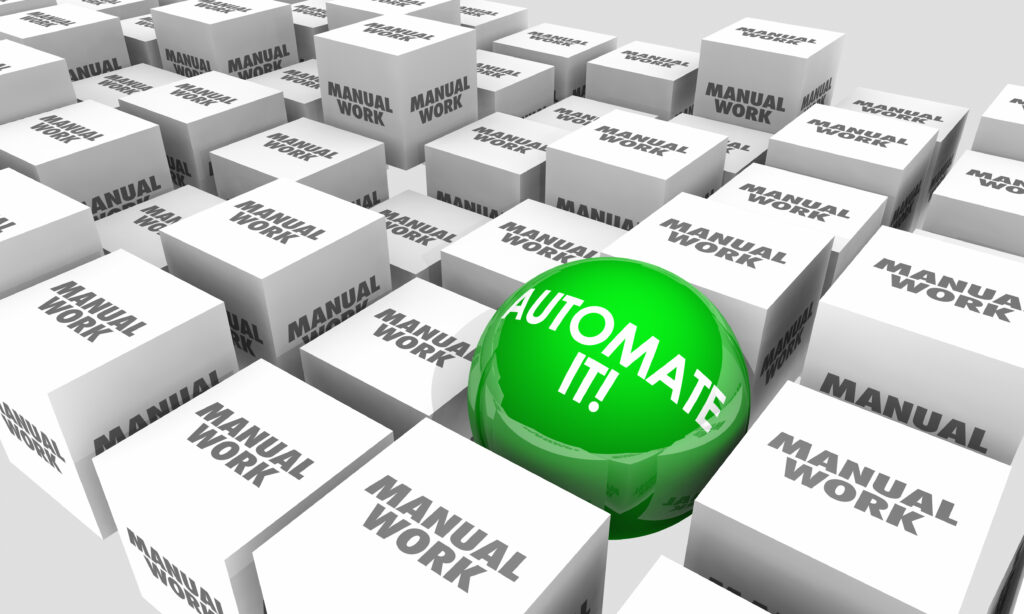It’s time to get back to basics, and examine what it is, and how it impacts day-to-day operations.
What is Workflow Automation in Print and Finishing?
Workflow automation is a series of “if/then” rules that define how specific tasks will be carried out. By specifying the exact tasks the rules apply to, and then creating a series of detailed steps that need to be carried out for those tasks, they can be completed with little to no human intervention. This, in turn, frees up skilled staff members to work on other things while the automated tasks are being completed.
Workflow automation is usually applied to the types of tasks that are repeated frequently and tend to have the same steps or processes assigned to them. One example would be job submission and having an automated process that checks files as they come in to ensure they are print-ready, apply color separations, preflight, RIP, or even drop into a press-ready template.
What are the Benefits?
Each touchpoint costs money, so there are benefits to streamlining tasks instead of having a person touch the files at each stage:
- Workflow automation can make your entire shop run more efficiently, reducing time between tasks.
- Workflow automation can make your shop more productive, as it is able to move jobs through faster.
- Jobs will be produced with more accuracy, with fewer errors.
- Using workflow automation creates a system that can be audited and improved over time, allowing you to see how files are moving through your shop and getting a better idea of where bottlenecks are happening.
- Greater job satisfaction for skilled workers when they are allowed to focus on the parts of the job that require their expertise, instead of the time-consuming and repetitive tasks that can be automated.
How Does Workflow Automation Work?
To get a better idea of what this means in practice, here is a hypothetical workflow a print shop might see:
- A customer visits the web-to-print portal and places an order.
- The workflow automation system will automatically check to see if the order is based on a template the shop offers, or if it is a custom job, and will either route it to the next automated step, or will send it to a skilled operator to step in.
- The system will give an estimate based on the template selected, the number of pieces required, and the time frame.
- The customer accepts and the order goes into the prepress system, where any files the customer has submitted are checked for size and quality. If the files pass, the job is moved to the next stage. If they fail, the customer is sent an automated message detailing the issue and asking them to resubmit new files.
- The job is dropped into a template that automatically adds appropriate bleeds and optimizes the sheet with imposition. If the shop accepts many small jobs, this step could gang jobs together to get the most out of every sheet, or if the shop does longer runs, it can ensure the imposition is correct and ready to go to press.
- The system queues the job to the appropriate printer, and depending on the workflow, either automatically sends it to print, or flags it as ready for an operator to check and send to the press.
- If finishing is part of the operation, workflow automation applies here too. The finishing information is saved with the job, so as it is moved off the press and into the finishing department, the data is automatically moved along with it with barcodes and registration marks. Once an operator moves the printed items to the correct finishing line, the automation can once again take over.
- Once the job is finished, automation can move along with it into the mail or fulfillment operation, specifying where the items need to go, how they need to get there, and when they need to go out the door. All that information is available to the operators, automatically attached to the job.
And this is a single example, and just one of the ways workflow automation could work. Skilled operators only step in if there is an error, or to move the physical job from one piece of equipment to the next. They are tasked with ensuring everything continues to run smoothly, and be on hand to solve problems, rather than have their day bogged down in repetitive tasks such as data entry or checking files for common errors that otherwise wouldn’t get caught until it hit the press.
This speeds up the production floor, as operators know that by the time it gets to them, it has been checked and is ready for print. It also improves customer satisfaction because it cuts down drastically on errors and allows them to catch and fix problems before the work ever gets into the production cycle.
You hear about workflow automation from all sides because it truly is a game changer. Especially in a world where finding talented labor is getting harder by the day, the ability to automate the “busy work” tasks allows you to focus on hiring fewer, more skilled workers who can actually run the presses and troubleshoot, rather than fill out the roster with entry-level data-entry positions. It also means the ability to run more work through the shop with the same equipment and the same — or fewer — employees, improving productivity and the bottom line.
Check out the integrations between Duplo’s Slitter/Cutter/Creasers and Fiery Impose or the DDC-810 Raised Spot UV Coater and Fiery JobFlow to learn how it helps print providers reduce bottlenecks by eliminating manual processes in finishing.
In short, workflow automation isn’t just a buzzword that can be ignored. It can mean the difference between setting a shop up for long-term success or barely keeping the doors open. It can make a bigger difference than even adding another press, or hiring a few more people, just by having the right software, the right rules, and targeting the right tasks in your operation.

DENISE GUSTAVSON
Guest Blogger
NAPCO Media




